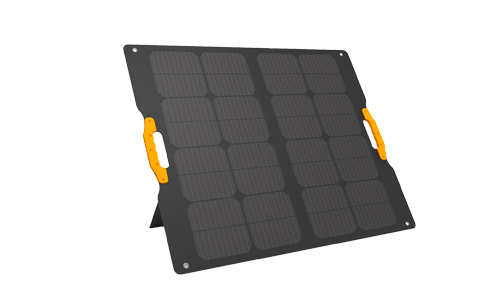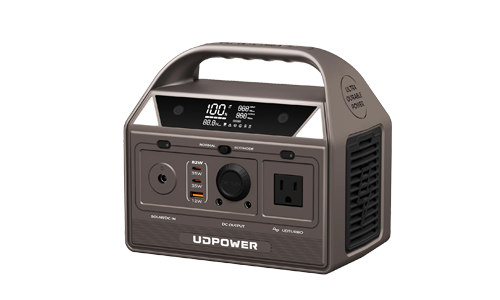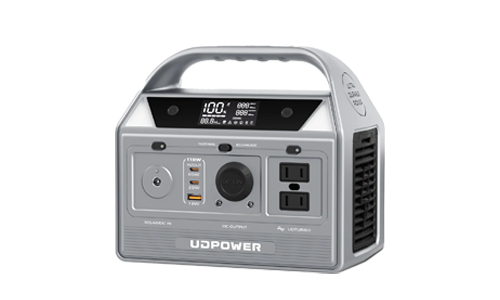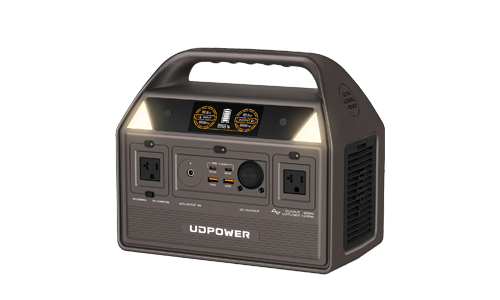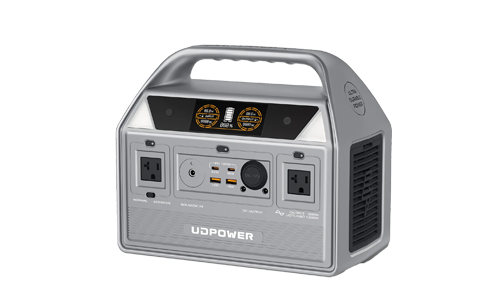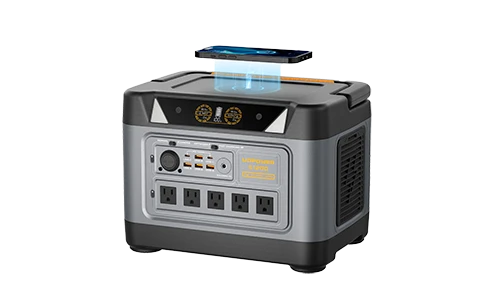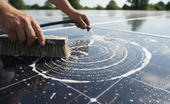Are Foldable Solar Panels Worth It?
ZacharyWilliamWritten by the UDPOWER Technical Team — With over a decade of experience in solar technology, lithium battery integration, and off-grid system design. All content is reviewed by certified energy consultants and product engineers.
Introduction
With the rise in outdoor adventures, off-grid living, and emergency preparedness, foldable solar panels have gained significant attention. Their lightweight, portable design seems perfect for anyone looking to harness solar energy on the go. But the big question remains—are foldable solar panels truly worth it? This guide breaks down everything you need to know before you invest.
1. What Are Foldable Solar Panels?
Foldable solar panels, also called portable or collapsible solar panels, are compact devices that can be folded down for easy transport and unfolded when needed. These panels often use monocrystalline solar cells for high efficiency and are made from durable materials like ETFE to withstand outdoor conditions. Unlike rigid panels, these are designed for quick setup and mobility.

2. Advantages of Foldable Solar Panels
| Advantage | Explanation |
|---|---|
| Portability | Lightweight and foldable, easy to carry in backpacks or RV storage compartments. |
| Easy Setup | Quick deployment — unfold and plug into a power station or device without tools. |
| Versatile Use | Ideal for camping, RV travel, outdoor work, boating, and emergency backup power. |
| Multiple Output Ports | Often equipped with USB, DC5521, Anderson, or MC4 connectors for wide compatibility. |
| Compatibility with Power Stations | Works seamlessly with portable power stations like the UDPOWER S1200 for solar charging. |
3. Disadvantages of Foldable Solar Panels
| Disadvantage | Explanation |
|---|---|
| Lower Efficiency | Typically less efficient than rigid panels, especially in suboptimal lighting or heat. |
| Durability Concerns | Folding mechanisms, hinges, and flexible surfaces may degrade faster over time. |
| Higher Cost per Watt | Generally more expensive than rigid panels on a cost-per-watt basis. |
| Not Ideal for High Demand | Limited output makes them unsuitable for powering large appliances or off-grid homes. |
| Performance in Harsh Conditions | May overheat or underperform in high-temperature or cloudy environments due to lack of heat dissipation. |
4. Are They Efficient Enough for Serious Use?
Most foldable panels have a conversion efficiency between 18% and 23%. While this is sufficient for moderate use, efficiency drops in cloudy conditions or with poor angle alignment. A 120W foldable panel, for example, may produce 80-100W in full sunlight. For serious use such as powering a portable fridge or multiple devices simultaneously, panel size and charging strategy should be carefully considered.
5. Ideal Use Cases for Foldable Panels
- Off-grid camping and hiking: Foldable panels are compact and lightweight, making them easy to pack and carry for remote power needs in nature.
- Charging power stations during RV or van life: They provide renewable energy on the go, allowing extended off-grid travel without relying on shore power or generators.
- Backup power during blackouts: A foldable panel paired with a power station offers a reliable source of emergency electricity for phones, lights, and small appliances.
- Outdoor photography or remote fieldwork: Keeps camera gear, drones, and laptops charged when operating in off-grid or mobile environments.
- Lightweight solar solutions for boating or trekking: Ideal for situations where space and weight are limited but energy access is critical.
6. When Foldable Panels Might Not Be Worth It
While foldable solar panels are ideal for portability and occasional off-grid use, there are scenarios where they fall short in practicality or value. In the following cases, traditional rigid panels or fixed solar setups may be a better investment:
| Scenario | Why Foldable Panels Fall Short |
|---|---|
| Permanent Installations (e.g., homes, cabins) | Rigid panels are more durable, efficient, and cost-effective over time. Foldables are not designed for year-round exposure or roof mounting. |
| High Energy Demand | Foldable panels are limited in wattage and surface area, making them unsuitable for powering refrigerators, HVAC systems, or heavy appliances. |
| Frequent Cloud Cover or Low Sunlight Areas | Foldable panels have reduced efficiency and lack the structure to optimize tilt angles. Fixed systems can maximize sun exposure with mounts and trackers. |
| Daily Residential Use | For continuous, daily energy production, rigid panels offer better long-term ROI and integration with home power systems. |
| Extreme Weather Conditions | Foldable panels are less wind- and heat-resistant, making them more vulnerable in storm-prone or high-temperature environments. |
7. What to Look for When Buying
- Wattage output: Choose based on your needs—usually 100–200W for portable use.
- Connector types: Ensure compatibility with your power station (MC4, DC5521, USB-C).
- Materials: ETFE-coated panels are more durable and weather-resistant than PET or fabric-based options.
- Weather resistance: Look for IP65 or higher for outdoor durability.
- Included accessories: Carrying bag, kickstand, cables, and extension options add convenience.
8. Cost vs Value
Foldable solar panels tend to be more expensive on a per-watt basis, but they offer significant value due to portability and convenience. The table below compares different types of solar solutions in terms of cost, typical use, and practical value.
| Type | Cost per Watt | Typical Total Cost | Use Case | Value Consideration |
|---|---|---|---|---|
| Foldable Solar Panels | $1.50 – $3.00 | $150 – $600 (60W–200W) | Camping, RVs, emergency use, mobile charging | High portability, ideal for short-term or mobile scenarios |
| Rigid Rooftop Panels | $0.50 – $1.00 | $2,000 – $10,000 (2kW–10kW) | Homes, cabins, permanent off-grid setups | Lowest cost per watt, best for long-term power generation |
| Solar Suitcase Panels | $1.20 – $2.00 | $300 – $800 (100W–400W) | Semi-portable setups, RV, field work | Balanced durability and ease of transport |
| Solar Generators with Built-in Panels | $2.50 – $4.00 | $500 – $2,000 (100W–300W) | All-in-one plug-and-play backup solutions | Highly convenient, but less scalable and less efficient |
As shown, the overall investment varies greatly depending on your needs. Foldable panels may seem more expensive per watt, but their low total cost makes them perfect for casual users who don’t need a full system. In contrast, rigid panels offer the best long-term value if you need consistent power and have space to install them.
Recommended Product: UDPOWER 210W Portable Foldable Solar Panel
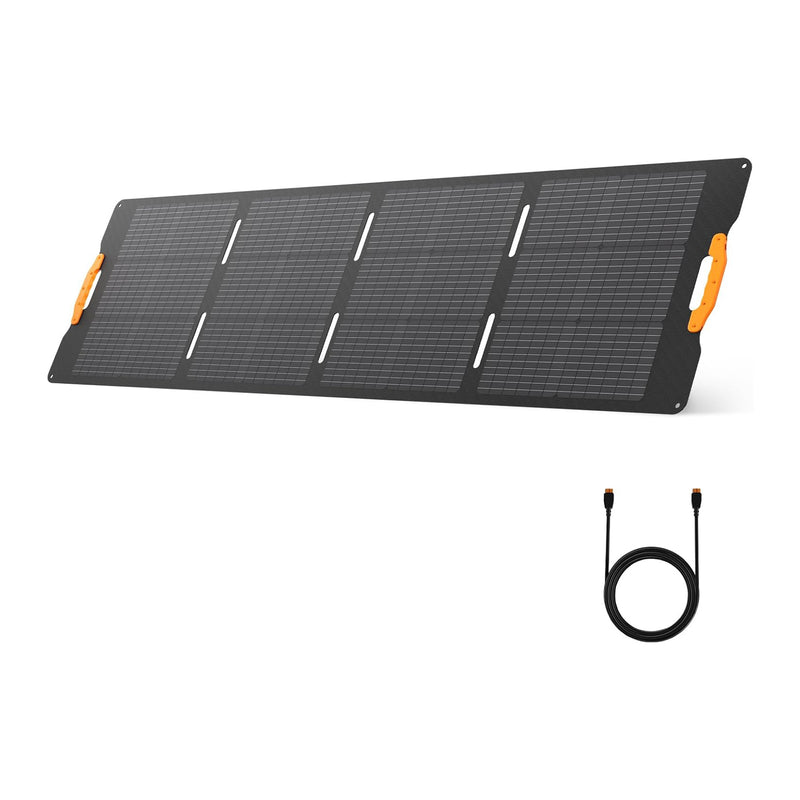
UDPOWER 210W Portable Foldable Solar Panel
- High-efficiency 210W monocrystalline solar cells (up to 22% conversion)
- Adjustable stand for 60°–90° tilt to maximize solar input
- IP65 waterproof rating – reliable for outdoor conditions
- Folded size: 23.66" × 23.19" × 0.79", total weight: 15.3 lbs
- Includes MC4 connectors – compatible with most portable power stations
10. Alternatives to Foldable Solar Panels
- Rigid Solar Panels with Tilt Mounts: Best suited for permanent or semi-permanent setups like cabins, RV roofs, or off-grid systems. These panels offer the highest efficiency and lowest cost per watt, especially when combined with tilt mounts to optimize sun exposure. However, they are bulky and require more setup effort, making them impractical for frequent transport.
- Solar Suitcase Panels: These panels are semi-portable and fold like a briefcase, often with a rigid aluminum frame and built-in charge controller. They offer a good balance between portability and durability. They're ideal for people who travel occasionally or want a plug-and-play solution without sacrificing too much power output.
- Solar Generators with Integrated Panels: These are all-in-one systems combining a battery, charge controller, inverter, and small solar panel(s). They're extremely easy to use—just unfold and power up—but they're generally low wattage and not expandable. Ideal for beginners or emergency kits, but not scalable for higher power needs.
- Portable Solar Blankets: Ultra-light and highly flexible, solar blankets can be draped over tents, vehicles, or backpacks. They're ideal for hikers and ultralight travelers, but tend to have lower durability and power output compared to foldable or suitcase panels.
- Roof-Mounted RV Panels: Designed to stay fixed on top of a van or RV, these panels are optimized for mobile off-grid living. They offer great performance and low maintenance but lack flexibility once installed and typically require more planning and wiring.
11. FAQs
Can foldable solar panels get wet?
Most quality panels are IP65 rated and water-resistant. However, avoid submerging or exposing them to heavy rain for prolonged periods.
Do foldable solar panels work in cloudy weather?
Yes, but efficiency drops significantly—expect 30–60% of rated output on overcast days. Charging will be slower.
How long does it take to charge a power station?
A 120W panel can charge a 500Wh station in 5–8 hours under direct sun, depending on weather and panel angle.
Are foldable solar panels durable enough for travel?
ETFE-coated models with reinforced hinges are designed for travel. Avoid low-cost models with fabric backing and poor waterproofing.
Can I connect multiple foldable panels together?
Yes, if your power station supports it and the panels use compatible connectors like MC4. Always follow voltage/current limitations.
Do I need a solar charge controller?
Only if you are charging a battery directly. Most power stations include built-in MPPT or PWM controllers.
12. Conclusion
Foldable solar panels are not a one-size-fits-all solution, but they excel in portability, flexibility, and simplicity. If you’re an outdoor enthusiast, weekend camper, or someone seeking a reliable emergency solar option, a foldable solar panel is a smart, lightweight investment. Just be sure to choose a quality model that matches your energy needs and device compatibility.
